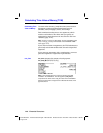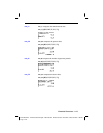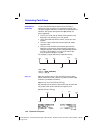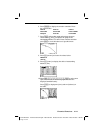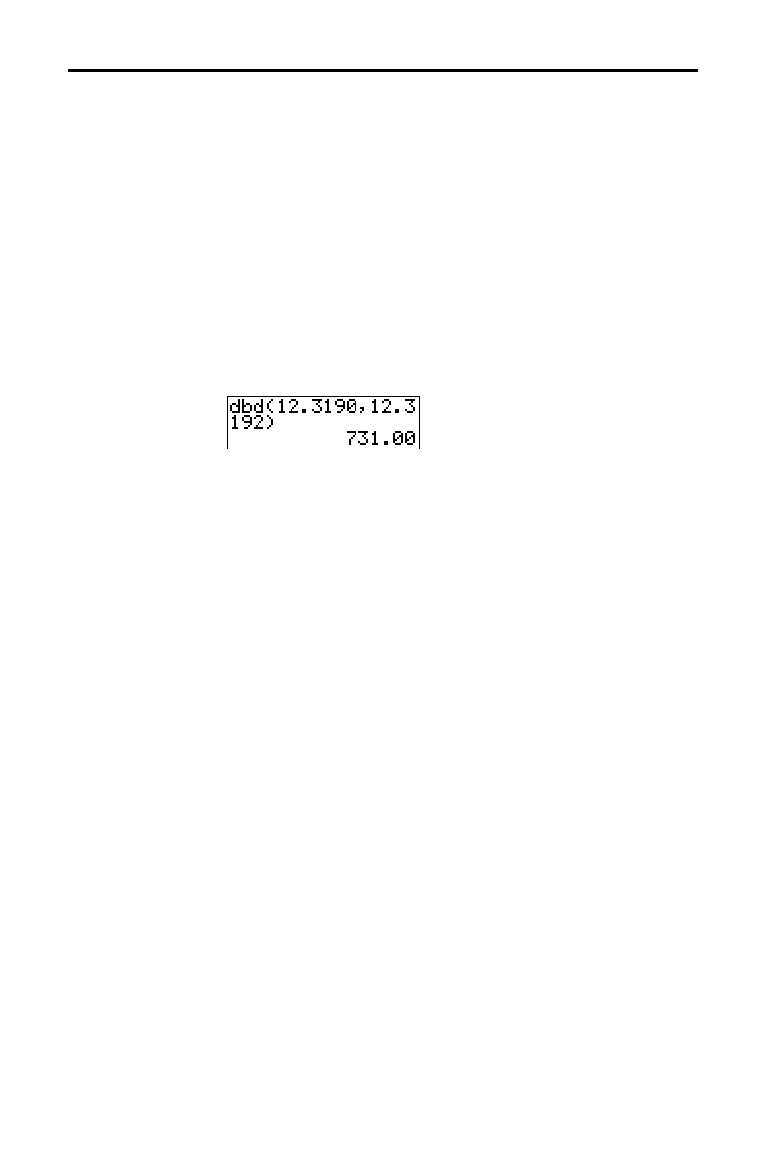
Financial Functions 14-13
8314FINA.DOC TI-83 international English Bob Fedorisko Revised: 02/19/01 12:50 PM Printed: 02/19/01 1:38 PM
Page 13 of 14
Use the date function dbd( (menu item D) to calculate the
number of days between two dates using the actual-day-
count method.
date1
and
date2
can be numbers or lists of
numbers within the range of the dates on the standard
calendar.
Note:
Dates must be between the years 1950 through 2049.
dbd(
date1
,
date2
)
You can enter
date1
and
date2
in either of two formats.
•
MM.DDYY (United States)
•
DDMM.YY (Europe)
The decimal placement differentiates the date formats.
Pmt_End and Pmt_Bgn (menu items E and F) specify a
transaction as an ordinary annuity or an annuity due. When
you execute either command, the
TVM Solver
is updated.
Pmt_End (payment end) specifies an ordinary annuity,
where payments occur at the end of each payment period.
Most loans are in this category.
Pmt_End is the default.
Pmt_End
On the
TVM Solver
’s PMT:END BEGIN line, select END to set
PMT to ordinary annuity.
Pmt_Bgn (payment beginning) specifies an annuity due,
where payments occur at the beginning of each payment
period. Most leases are in this category.
Pmt_Bgn
On the
TVM Solver
’s PMT:END BEGIN line, select BEGIN to
set
PMT to annuity due.
Finding Days between Dates/Defining Payment Method
dbd(
Defining the
Payment Method
Pmt_End
Pmt_Bgn




